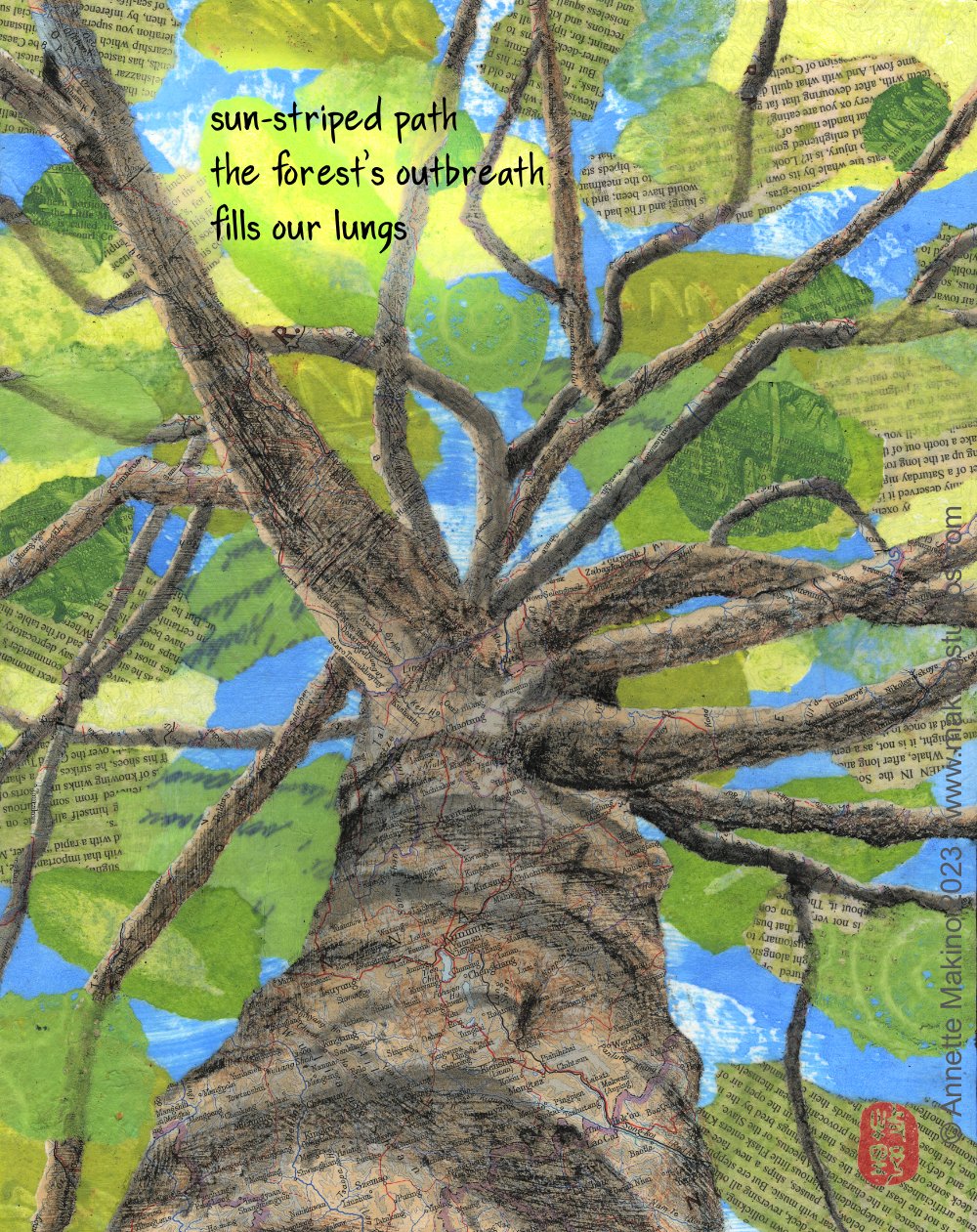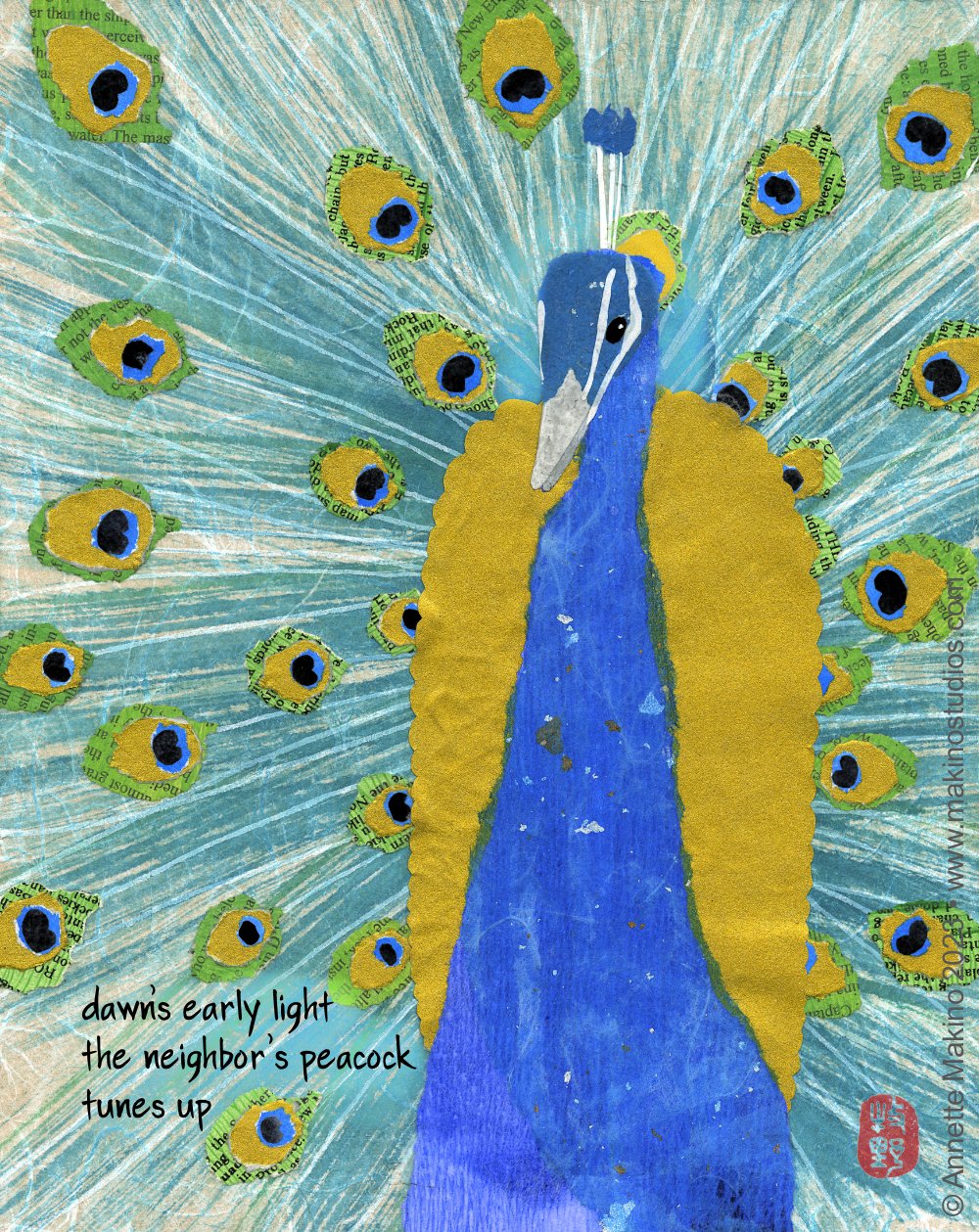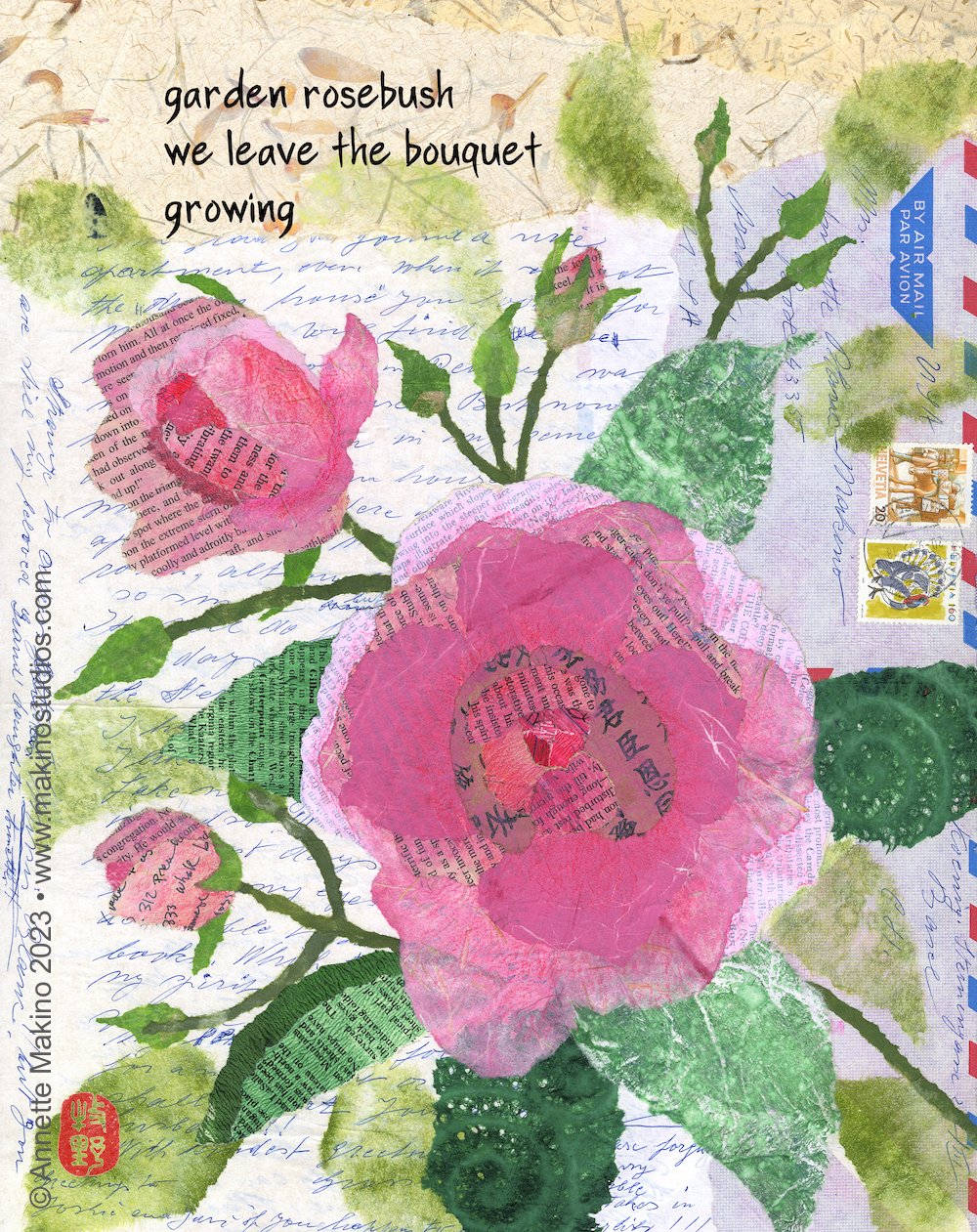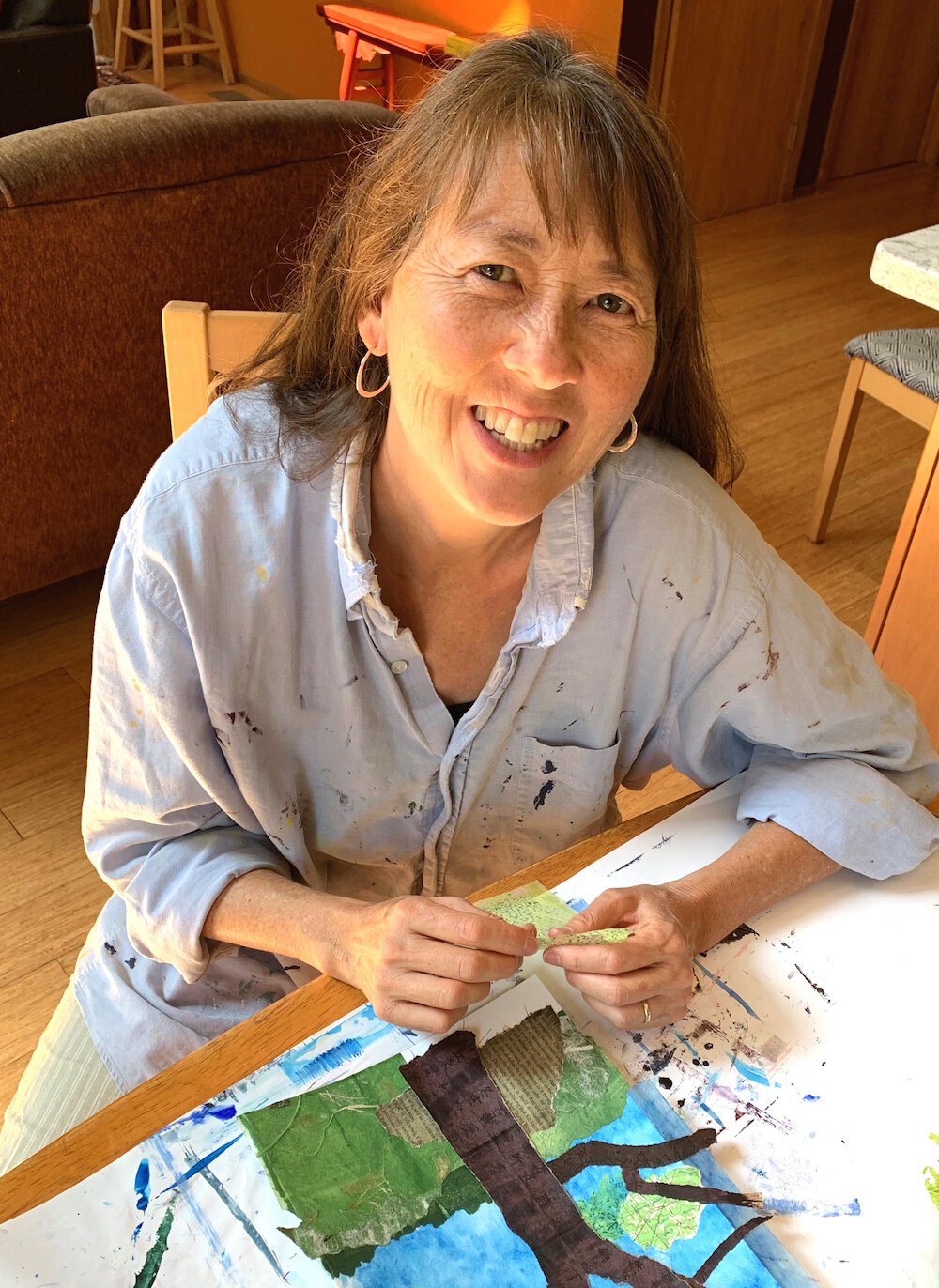Today is sunny, but through the weekend, the clouds hung on till afternoon, and I was chilly enough to wear a wool sweater. Here on the Northern California coast, we have entered the month of Fogust. In our cool and damp micro-clime, so perfect for redwoods, locals are amazed by the temperature if it reaches 70 degrees.
But having lived near Ukiah, CA as a teen and visited family often since, I know a little about triple-digit heat. Today I’m sharing a haiku sequence that I wrote on a recent trip there.
By the way, while traditional haiku are supposed to convey the season, there are lots of ways to do that without stating it directly. This sequence only uses the word “summer” once, but you’ll see that there are many creative ways to imply it.
Today I’m also featuring two collage haiga (art with haiku) that were inspired by my time in beautiful Mendocino County.
Heat Wave
weathered fence posts
resting on the wire
meadowlark song
This mixed media collage is 8×10, made with paper, acrylic paint, crayon, ink and glue on cradled wood. © Annette Makino 2023
English Breakfast
a real scorcher
gathers steam
record highs
the weather map
blazing
wildfire season
the first clothes I hung
tinder-dry
and the seasons . . .
turning the fan
to summer mode
heat haze
a hummingbird
fans the air
ninety in the shade
a glass of iced tea
sweating
cherry pits
stud the bear scat
exposed trail
the day’s heat
still rising from the stones
the whoosh of bats
first stars
we open every window
to let in the night
Whether yours is foggy and damp or sunny and dry, I hope you’re enjoying the summer!
•
Makino Studios News
Free shipping this week: Your Makino Studios order ships free through Sunday, August 10 with code SIZZLE25. Enter the code at checkout. No minimum order. US addresses only.
This haiga, painted with sumi ink and Japanese watercolors on paper, appears in Water and Stone: Ten Years of Art and Haiku, Annette Makino, Makino Studios, 2021.
2026 calendar focus group: I’m working away on the collages for my 2026 mini-calendar of art and haiku! I could use some input on which image to use for the cover. If you’re interested in getting a sneak peek online and voting on the contestants, please reply to this email. And if you were part of last year’s focus group, I’ll include you again. Thanks!
Haiku 21.2: I’m honored to have the following haiku in Haiku 21.2, a new anthology of contemporary haiku in English, published by Modern Haiku Press:
October sun
the sky the color
of forever
Haiku North America: This biannual conference will be held in San Francisco September 24-28. I’m excited to attend HNA for the first time! Registration is still open for anyone interested in haiku.
•
“Heat Wave” was published in Frogpond, 48.2, Spring/Summer 2025










